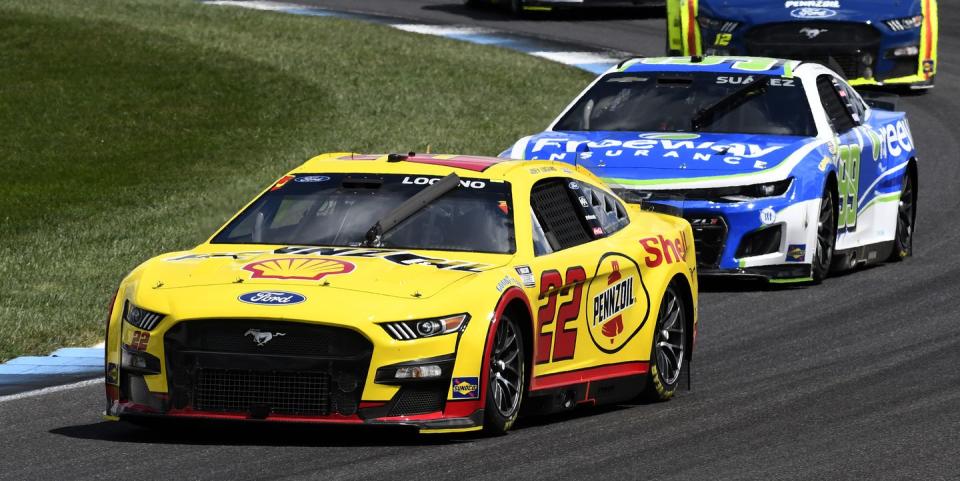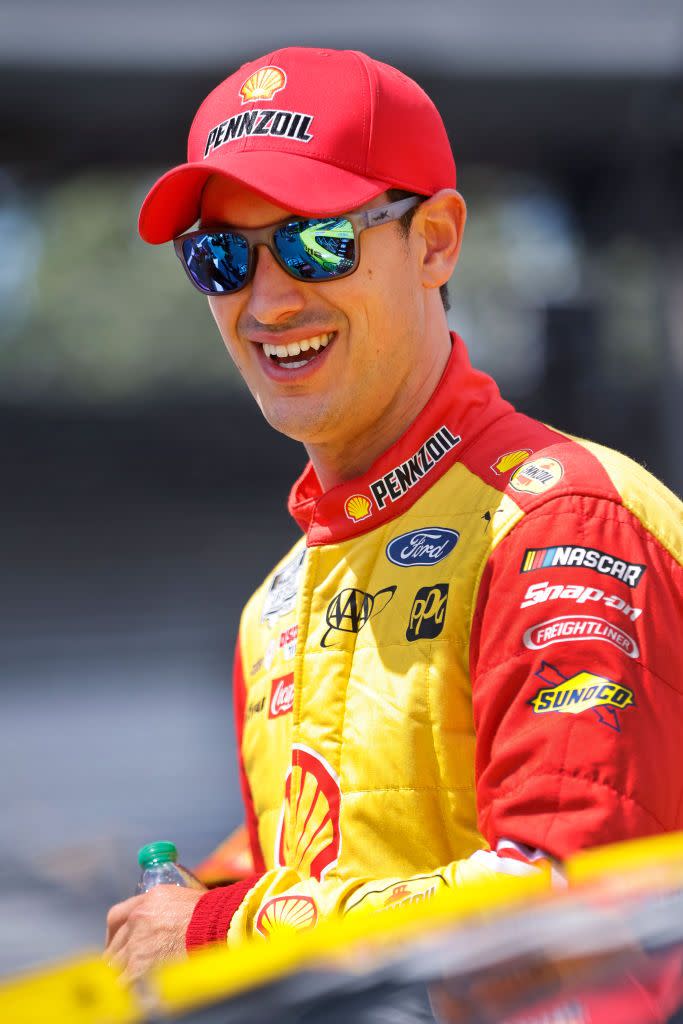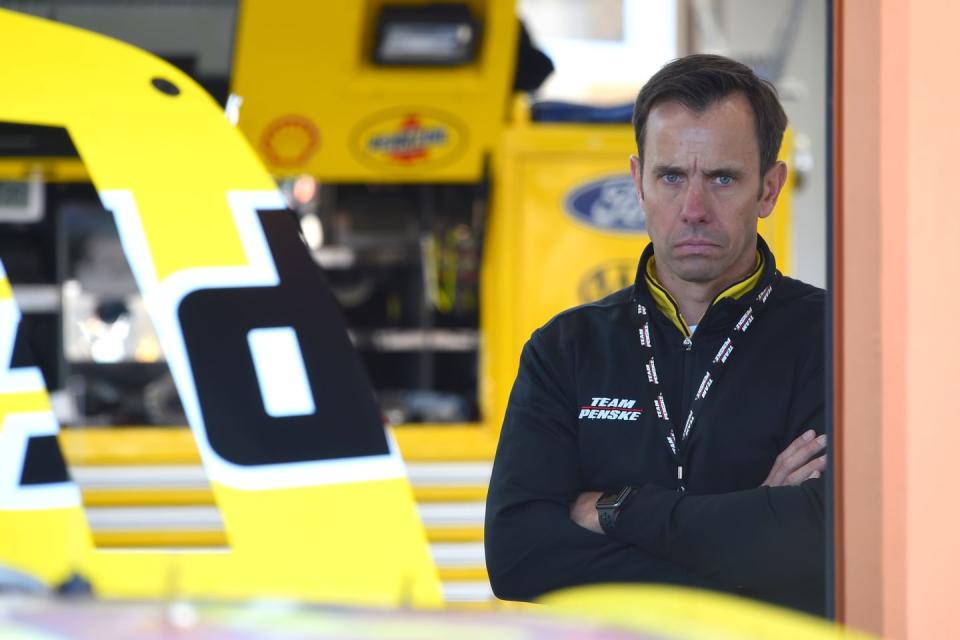Why Ford's Next Gen Cup Car Is Proving to Be a Mystery Machine

The mysteries of NASCAR's new car seem to be particularly challenging for Ford teams.
Ford has only four wins (Austin Cindric at Daytona, Chase Briscoe at Phoenix and Logano at Darlington and Gateway) and hasn’t won since the first week of June.
Mark Rushbrook, global director for Ford Performance Motorsports, said this week that four wins “is not enough. It’s not acceptable.
Although the NASCAR Cup Series playoff grid is far from settled with four races left in the regular season, leading teams are already planning, plotting and pondering the 10-car run for the championship.
Pondering—there’s a lot of that.
Although the Next Gen car has been in 22 points races and two non-points events, what it might—or might not—do in certain situations and track conditions remains somewhat of a mystery. Race cars are refined every week, and it often takes years of toying with one particular model to understand all its quirks and quibbles.

This model is a relative toddler, and teams are still trying to please it.
“We don’t have great data on this car to know what’s real or what’s simulation BS,” said Joey Logano, 29 times a Cup winner and the 2018 champion. “It’s hard to read through what’s in real life and what is the stuff you see from simulation data. Those things are hard to clarify right now without a bunch of real-life, on-track testing.”
The mysteries of the new car seem to be particularly challenging for Ford teams. Ford has only four wins (Austin Cindric at Daytona, Chase Briscoe at Phoenix and Logano at Darlington and Gateway) and hasn’t won since the first week of June. In laps led, Ford (1,104) trails Chevrolet (2,739) and Toyota (1,676). In nine of the 22 races to date, Ford drivers have led less than 20 laps.
Mark Rushbrook, global director for Ford Performance Motorsports, said this week that four wins “is not enough. It’s not acceptable. … We need to have drivers further up the standings and hopefully at least four if not more drivers into the playoffs.
“We’ve seen a lot of success with speed at different tracks where we have understood it, but we still didn’t bring the win home. … We’ve got to get better in all areas because if you’re equal in every area, you’re exactly that – you’re only equal in every area.”

The playoffs offer a new landscape, of course, with 16 drivers racing for the championship in a 10-race span scheduled to begin Sept. 4 at Darlington Raceway.
“We were very strong there (at Darlington) and able to win that race (in the spring),” said Paul Wolfe, Logano’s crew chief. “That gives the team confidence that there’s a good race to kick everything off. We have a good baseline, and we’ll try to find a little more than what we had.”
Finding that “little more” has been a challenge across the garage area. Because the car is essentially a spec racer with parts and pieces provided by outside vendors, the “working area” in which teams can gain speed is significantly more limited than with last year’s car.
How does the new car compare to the old as far as teams’ ability to make meaningful changes?
“If the old car was 100%, I feel like you’re at 25 with this one,” Wolfe said. “There are very few things you design on your own any more. That box is really small. I think guys are still trying to understand the tradeoffs grip-wise versus what you might gain in aero. With the old car, we had a good understanding of that. Now we’re still playing around with things.”
Wolfe said the limitations that came along with the new car necessarily put more responsibility on the driver to make speed gains.
“That’s why you’re seeing so many different winners and guys you haven’t seen in the past be able to run up front,” he said. “I guess NASCAR has accomplished what they’re going for as far as making things more equal. … At this point, it’s going to get to a level where the driver will make a bigger impact on the overall performance of the car than in past years.”
Although the new car carries with it major differences, Logano said he continues to believe that a driver and his team have equal responsibilities for car performance.
“I’ve always said it’s 50-50,” Logano said. “I’ve never seen a really great race car with a mediocre driver win a lot of races, and I’ve never seen really great drivers with mediocre cars win a lot of races. I’ve never seen it in any type of motorsports—F1, NASCAR, late models, modifieds. I haven’t seen it happen yet.
“The Next Gen car is still a race car. I don’t care who you are. You can be Mario Andretti. If the car is that far off, you’re not making up the difference with the caliber of drivers out there. I don’t see this car being much different.”
Logano conceded that the cars are much closer from team to team and that “when you’re a little bit off now you might finish 20th where it used to be 12th. That part is different because the cars are closer.”
Logano said he is looking forward to the playoffs, which he described as “the most exciting time of the year. … Are we coming in as the favorite with guns blazing? No, we are not. That being said, I’ve come into the playoffs before as the favorite and did not win. I’ve come in as the underdog and did win.
“I’ve learned to keep pushing and keeping my head down and keep grinding. It can change in one weekend. You can go from hero to zero and from zero to hero real quick.”

 Yahoo Autos
Yahoo Autos 